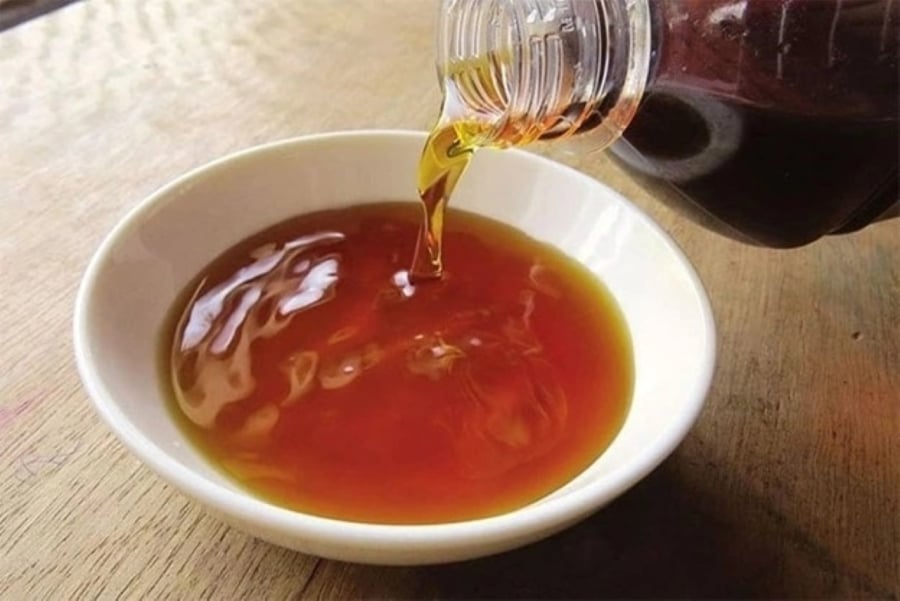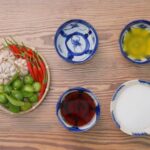1. Matching Dips for Delicious Dishes
From pure fish sauce to the dipping sauce for each dish, there is a subtle art and skill involved.
Essentially, the base fish sauce is quite similar across the three regions of Vietnam, but the dipping sauces of the North, Central, and South have distinct flavors.
Typically, pure fish sauce is mixed with water, vinegar, sugar, and other spices, creating a balanced blend of sour, spicy, salty, and sweet flavors. The proportions are adjusted according to the dish, enhancing its taste and reducing any greasy sensations left by the food.

Each Dish Requires a Unique Touch
2. Tailoring the Sauce to the Dish
– For soups, it is best to add the fish sauce at the very end, just before serving.
– When it comes to braised meat, many people make the mistake of marinating the meat in fish sauce while it’s still raw. This can toughen the meat and diminish its natural flavor. Instead, lightly season the meat with salt and MSG, then braise it until almost cooked through. Only then should you add the fish sauce and continue cooking for a little longer, allowing the sauce to intensify the dish’s flavor.
– For shrimp or crab dishes, avoid using fish sauce as it can overpower their delicate flavors.
3. Crafting the Perfect Dipping Sauce: A Culinary Symphony
– For boiled meat or steamed fish, use pure fish sauce without diluting it. Simply add chili peppers, black pepper, or a squeeze of lime/kumquat for a touch of citrus.
– For fried dishes like fish, spring rolls, or shrimp in batter, the art of sauce-making truly shines. The right blend of fish sauce, water, and other ingredients can elevate these dishes to new heights.
Note: Nitrogen Levels Matter
According to Vietnamese standards, the higher the nitrogen content in fish sauce, the more nutritious it is, and the longer its shelf life.
Premium fish sauce has a nitrogen content above 48, first-class sauce is above 40, and good-quality sauce is above 24. Sauce with a nitrogen content above 16 is considered second-class, and anything below 10 is of inferior quality and does not meet standards.
When seasoning or creating dips, a fish sauce with 25% nitrogen is more than sufficient to ensure a tasty and nutritious result.
Nutritionists recommend choosing a fish sauce with a deep brown or amber hue, a strong aroma, a high concentration of fish protein, and clear consistency. If a fish sauce tastes overly salty and leaves a tingling sensation on the tip of your tongue, it likely has a low nitrogen content.
In addition to nitrogen levels, pay attention to the manufacturer, ingredients, and additives when selecting a fish sauce. Avoid products without proper labeling or those that lack mandatory information, such as nitrogen content.
The Secret to Making Soft and Delicious Rice Balls That Stay Fresh and Don’t Leak
To make delicious and visually appealing Vietnamese treats, Banh Troi and Banh Chay, you need to gather a few simple ingredients and follow some easy steps. These traditional delicacies are a must-have for any food lover, and with the right guidance, you can master the art of creating these mouth-watering treats. So, let’s dive into the world of Banh Troi and Banh Chay and explore the secrets to their perfection.
The Perfect Chili Garlic Sauce: A Balanced Blend for the Ultimate Dip
Sweet and sour fish sauce is a staple in Vietnamese cuisine, and while anyone can mix a batch, getting the perfect balance of flavors and a visually appealing dish with floating chili and garlic is an art. It’s a simple condiment, but the devil’s in the detail – with the right touch, you can keep the chili and garlic from sinking and discoloring, ensuring a vibrant and tasty sauce every time.






































